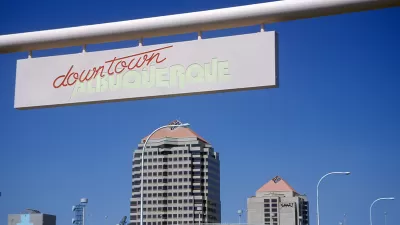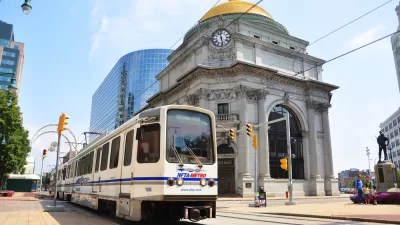Birmingham, Michigan; Albuquerque, New Mexico; Providence, Rhode Island; and others that adopted a new urban approach 15 or 20 years ago have transformed themselves.

Author and architect Witold Rybczynski recently suggested that the New Urbanism has had little or no impact on big cities, citing a lack of signature projects like the High Line in New York City or Disney Hall in Los Angeles.
More than a few urbanists responded that New Urbanism has dramatically impacted street design, infill development, and regulatory policies like form-based codes. Place-based development may have a profound effect over time in a big city yet get lost in the overall scale of a major metropolis. The new urban approach tends to blend in rather than shout “look at me.”
In mid-sized or smaller cities, the effects of New Urbanism can be much more dramatic. In these places, a few good infill projects, livelier public spaces, and new streetscapes can feel like a whole new downtown. Birmingham, Michigan; Albuquerque, New Mexico; Providence, Rhode Island; and many others that adopted a new urban approach 15 or 20 years ago have transformed themselves to a significant degree.
FULL STORY: New Urbanism’s impact on mid-sized and smaller cities

Trump Administration Could Effectively End Housing Voucher Program
Federal officials are eyeing major cuts to the Section 8 program that helps millions of low-income households pay rent.

Planetizen Federal Action Tracker
A weekly monitor of how Trump’s orders and actions are impacting planners and planning in America.

The 120 Year Old Tiny Home Villages That Sheltered San Francisco’s Earthquake Refugees
More than a century ago, San Francisco mobilized to house thousands of residents displaced by the 1906 earthquake. Could their strategy offer a model for the present?

Alabama School Forestry Initiative Brings Trees to Schoolyards
Trees can improve physical and mental health for students and commnity members.

NYC Outdoor Dining Could Get a Re-Do
The city council is considering making the al fresco dining program year-round to address cost concerns from small businesses.

HSR Reaches Key Settlement in Northern California City
The state’s high-speed rail authority reached an agreement with Millbrae, a key city on the train’s proposed route to San Francisco.
Urban Design for Planners 1: Software Tools
This six-course series explores essential urban design concepts using open source software and equips planners with the tools they need to participate fully in the urban design process.
Planning for Universal Design
Learn the tools for implementing Universal Design in planning regulations.
Ada County Highway District
Clanton & Associates, Inc.
Jessamine County Fiscal Court
Institute for Housing and Urban Development Studies (IHS)
City of Grandview
Harvard GSD Executive Education
Toledo-Lucas County Plan Commissions
Salt Lake City
NYU Wagner Graduate School of Public Service





























